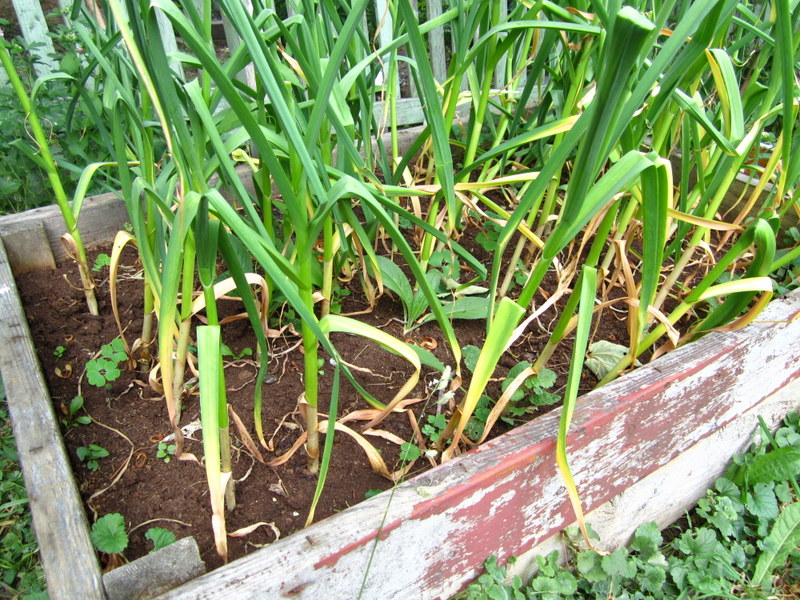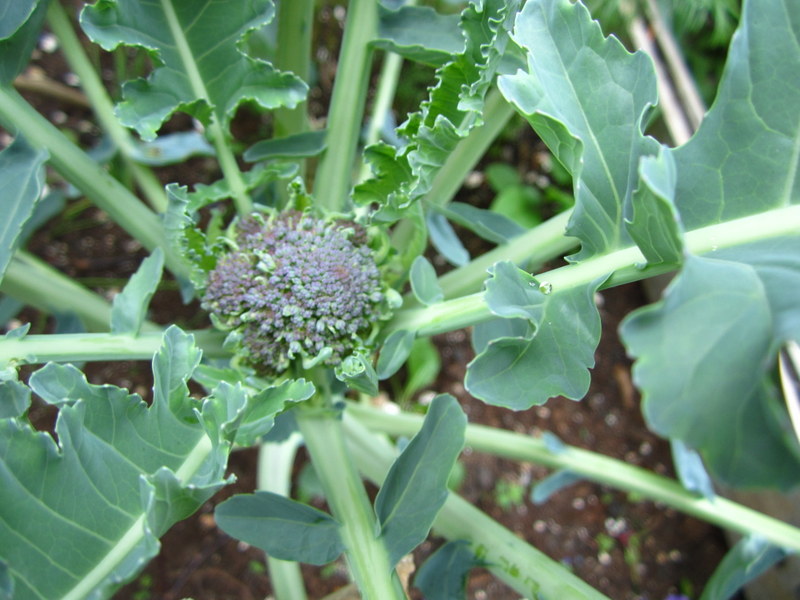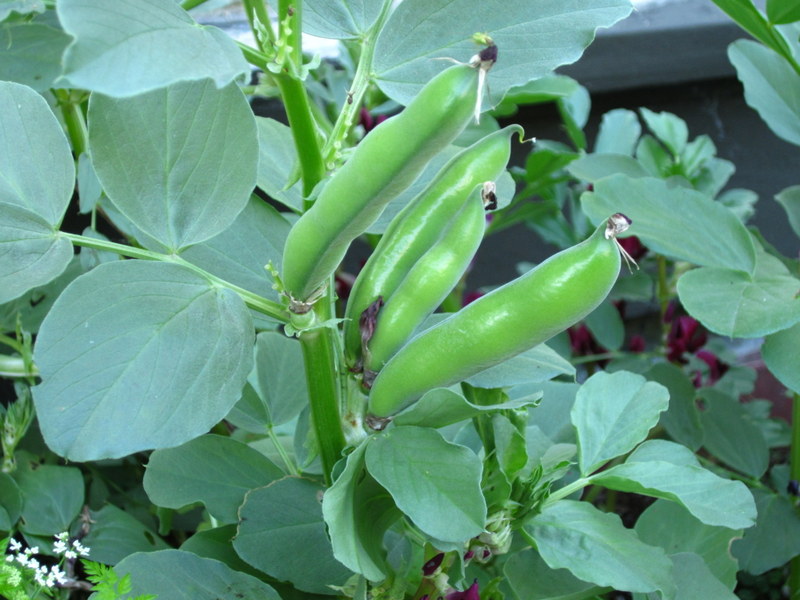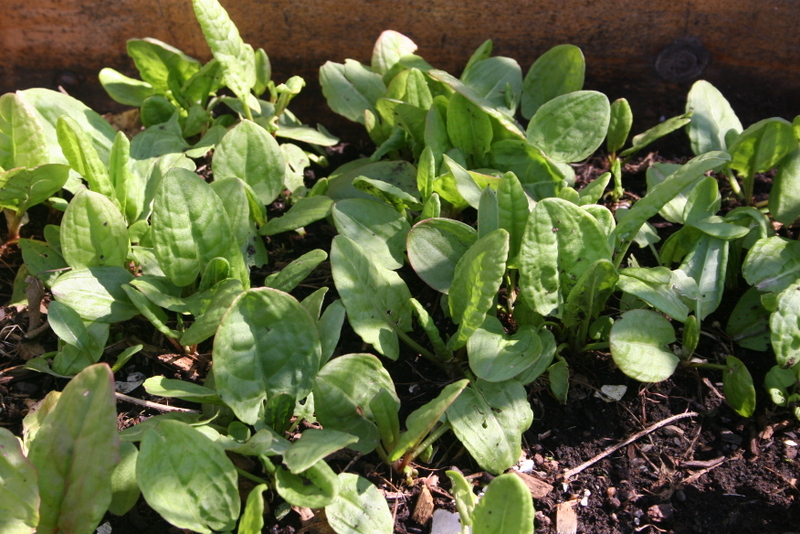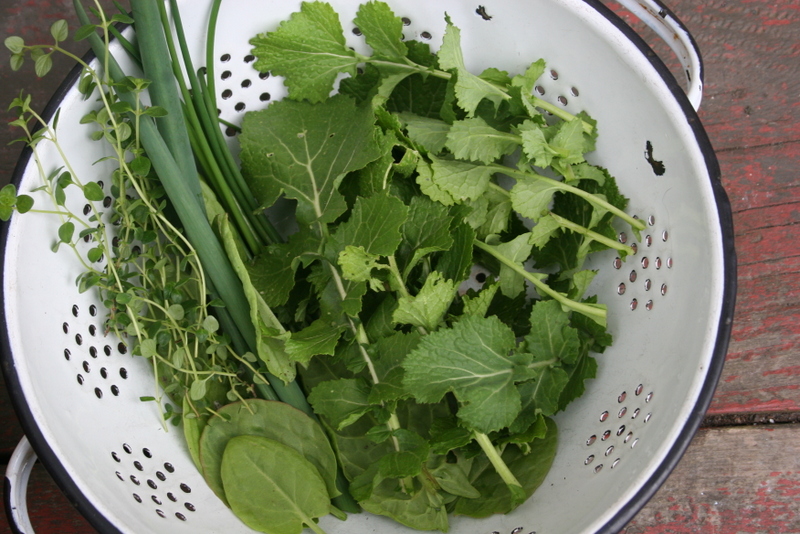This summer has been something else, hasn't it? My tomatoes are fruiting happily, my zucchini are starting to flower, and even my very-late-started cucumbers look like they might provide me with a few crisp slicers before the frost hits them. It's glorious. However, there's always a price to pay for nice weather. My spring-sown greens - spinach, rapini, arugula and the like - all bolted to high heaven when the hot weather hit. So I missed out on my rapini - one of my very favourite vegetables - again. I've sown some more arugula, and I'll try the rapini and spinach again later this summer for a fall crop. But still, my repeated failure on the rapini front is getting more than a little discouraging. Fall had better be good to me.
I may have had success with my garlic, but of course I can't tell until I dig it up. If it has formed decent-sized bulbs I'll be super impressed, since I don't think I got it in the ground until after Christmas (the recommended time for planting garlic being, oh, around October). Here's the thing, though: if my garlic is ready to come up within the next few weeks, as it looks like it will be, then what am I going to plant in my newly-emptied garlic bed? On one hand, it's exciting to have a bunch of garden space come available., especially now that almost every corner of my garden is full to capacity. On the other, filling a bed in part shade with something that will be up and out of the ground by the time I have to plant next year's garlic (some time before Christmas this year, fingers crossed) is a lot of pressure. What grows that fast? Radishes and lettuce, I suppose. Nothing wrong with radishes and lettuce.
Just across the yard from my speedy garlic is my very confused broccoli. Actually, it's called purple sprouting broccoli. It's very common in British home gardens, where it is known as one of the few vegetables that grows through the winter to provide fresh eats in the early spring; normally, transplants are planted out in the spring so the plant can grow over the summer. Then the plant stands through the winter and produces lovely purple florets in March and April. Well, I planted mine out in spring, just like it said to on the package. Then the weather got really hot. Then it got really cold. Then it got really hot again, and now my purple sprouting broccoli is sprouting, about eight months ahead of schedule. Did the frost in June convince my purple sprouting broccoli that it had survived a winter? Will my broccoli keep on sprouting into the fall and winter, or will it bolt and fizzle out? And what am I going to eat in March?
Finally, my broad beans (fava beans) are attempting to live again. They flowered spectacularly in the spring, delighting the eye and perfuming the evenings with the most divine scent. I pinched out the young growing tips of each plant and ate them as luscious salad greens. Then it got hot out and almost all the flowers fell off before setting fruit. So for all those lush red blossoms, I'm going to get a handful of beans. Sigh. All hope is not lost, though; pinching out the growing tips has made the bean plants send out side shoots, which means more flowers. Maybe these ones will have cooler weather when it comes time to set fruit, and I'll have... two handfuls of beans.
Oh, my garden. Confused, off-schedule, and in too deep. But would I have it any other way?







